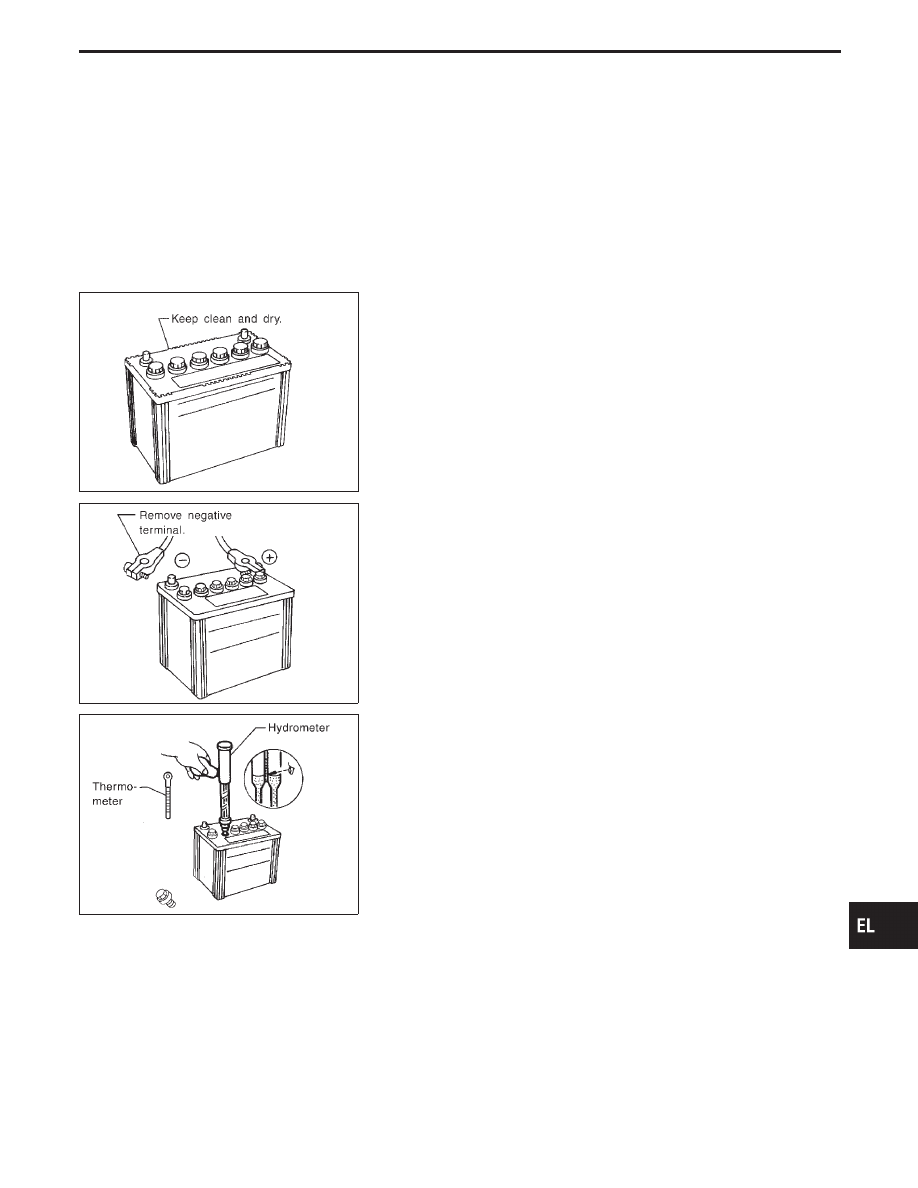Infiniti Q45 (FY33). Manual - part 261

CAUTION:
a.
If it becomes necessary to start the engine with a booster
battery and jumper cables, use a 12-volt booster battery.
b.
After connecting battery cables, ensure that they are
tightly clamped to battery terminals for good contact.
c.
Never add distilled water through the hole used to check
specific gravity.
MEL040F
How to Handle Battery
METHODS OF PREVENTING OVER-DISCHARGE
The following precautions must be taken to prevent over-discharg-
ing a battery.
I
The battery surface (particularly its top) should always be kept
clean and dry.
I
The terminal connections should be clean and tight.
I
At every routine maintenance, check the electrolyte level.
This also applies to batteries designated as “low maintenance”
and “maintenance-free”.
MEL041F
I
When the vehicle is not going to be used over a long period of
time, disconnect the negative battery terminal. (If the vehicle
has an extended storage switch, turn it off.)
MEL042F
I
Check the charge condition of the battery.
Periodically check the specific gravity of the electrolyte. Keep
a close check on charge condition to prevent over-discharge.
CHECKING ELECTROLYTE LEVEL
WARNING:
Do not allow battery fluid to come in contact with skin, eyes,
fabrics, or painted surfaces. After touching a battery, do not
touch or rub your eyes until you have thoroughly washed your
hands. If acid contacts eyes, skin or clothing, immediately
flush with water for 15 minutes and seek medical attention.
GI
MA
EM
LC
EC
FE
AT
PD
FA
RA
BR
ST
RS
BT
HA
IDX
BATTERY
EL-35